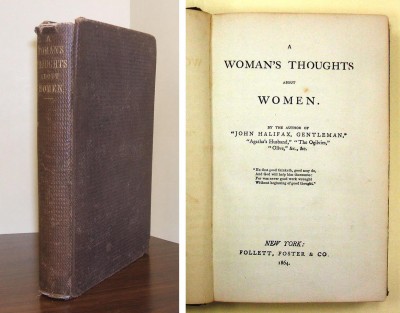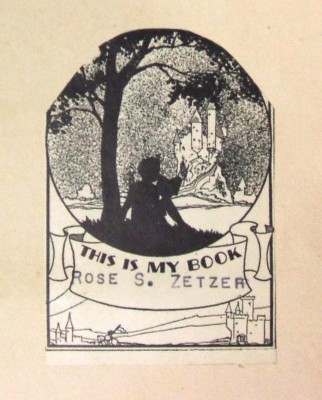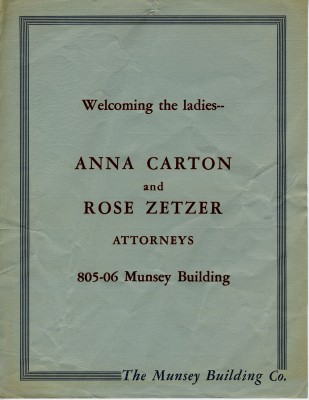From “A Woman’s Thoughts” to “Welcoming the Ladies” – A Few Thoughts for the End of Women’s History Month

A blog post by Collections Manager Joanna Church. To read more posts from Joanna click HERE.
When you’re researching in our (or any museum’s) collections, intriguing artifacts often lead you to other intriguing artifacts. Our book collection includes this title that caught my eye while scanning spines: A Woman’s Thoughts About Women. It’s an 1864 edition of an 1858 essay, with one of those discreet Victorian “By the Author of…” attributions. As the title suggests, it was written by a woman: British novelist Dinah Maria Mulock Craik (1826-1887). The book falls into the popular advice genre, but is aimed at improving the lives of independent, single women, rather than the usual audience of housewives or fine ladies (and their servants). At the time of publication, the author was still Miss Mulock, not yet Mrs. Craik.

Why does the Jewish Museum have this fine work? The inside cover includes the bookplate of a local woman, lawyer Rose S. Zetzer (1904-1998). I’m still learning the personalities in our collections, so I went to the database to look for more information.

Ms. Zetzer was born in Baltimore to Jacob and Baila Zetzer, Russian immigrants. In 1925 she graduated from the University of Maryland law school (where a fellowship is named in her honor), but had difficulty finding a job in the male-dominated field. So in 1940, she joined forces with Anna Carton, and they went ahead and formed the first all-female law firm in Maryland. Their offices were in the Munsey Building at Calvert and Fayette Streets, Baltimore. In our Zetzer collection we have this small poster printed by the owners, “welcoming the ladies” to the building:

Like all good artifacts, these two pieces raise questions the more you think about them. Did Mrs. Craik’s essay have a particular meaning for Rose Zetzer, or did she regard it as an historical novelty, amusingly related (or not) to her own life and career? Why did the ladies choose the Munsey Building – and were the landlords really all that ‘welcoming’? We know a fair amount about Ms. Zetzer’s career (read a little more about her life here and here, but in lists of impressive Firsts and Onlys, the smaller, everyday details of a person’s life can be lost. Items like these two, which might be considered little more than ephemera, can help bring those details back to life – even if only as a spark to the imagination.
